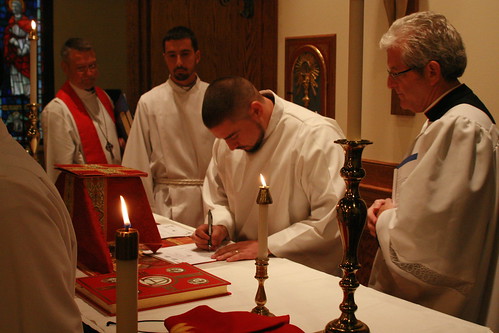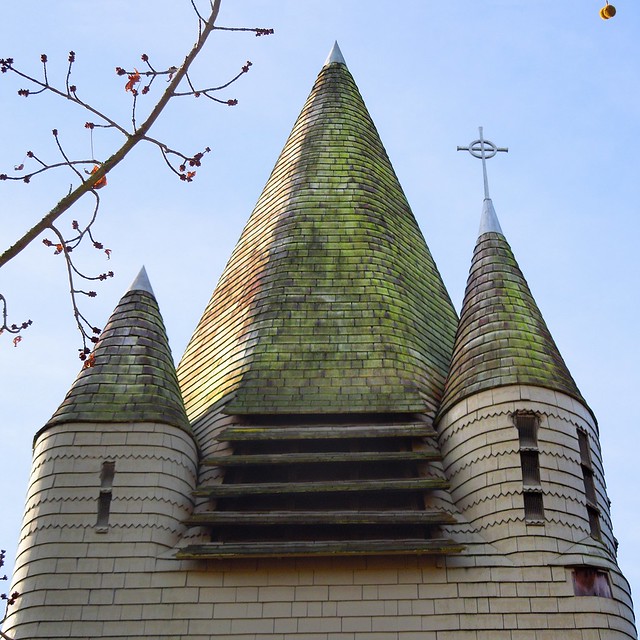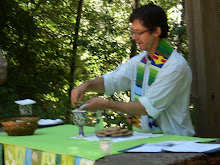Some of us
here at St. John’s have been meeting since September to study a book about
Jesus. Not Jesus as the author supposes
he might have been, but Jesus as people have imagined him, in every era of Christian
civilization: Jesus as they have honored and adored him; Jesus, who one way or
another has held the key for them to know who God is, and what is good, and
beautiful, and true.
Reimagining
Jesus is what Christians have always done. It’s a process that was already well under way
when the four Gospels were written, as you can easily see by comparing them. Each one presents a different picture of what
he said and did, how he died, and what happened to him after that, because each
of them arose in a different community.
These little groups that became the church took the traditions that had
been handed down to them about him and shaped them to speak to their hopes and
fears, their needs, their experiences of the Spirit of Christ, and the signs he
showed them of God’s kingdom. Of
course, those differences only serve to make the main character of the stories
that much more compelling. So while we
find four distinctive images of Jesus in Matthew, Mark, Luke, and John, we have
no doubt that they are all about the same person.
Jews,
Muslims, and Buddhists, even atheists and agnostics, are curious about the
person who inspired those stories. Many
admire his teachings and try to understand him better by making comparisons
with other prophets, saints, and sages.
But what animates Christian faith is something more than curiosity and
admiration. It is more than the search
for an accurate portrait of a historical figure. It is something more even than the
willingness to believe certain things about Jesus. The heart of Christian faith in Jesus is the
desire to know him as he is. It is
living and creative, because it is love infused with hope for oneself and for
the world.
In the
great chapter on Christian love in First Corinthians, Saint Paul writes “For
now we see in a mirror dimly, but then [we will see] face to face; now I know
in part, but then I will know fully just as I also have been fully known.” Our desire to know Jesus is one with our hope
of knowing ourselves and others as we truly are, as we are known and loved by
God. And when we look at those men and
women who have cultivated that desire, and have committed more and more of themselves
to the fulfillment of that hope, what we see is transformation.
There is a
story, perhaps apocryphal, that on his deathbed Lenin made this confession to a
childhood friend who was a priest:
“I have made a mistake. No doubt .
. . many people who were oppressed had to be freed, but our method let loose
new forms of oppression and murder. You know it, and it is my deadly nightmare
to feel smothered in this ocean of blood of innumerable victims. What was
needed to save Russia—but now it is too late—was a dozen like Francis of
Assisi.”
Whether or
not this story is historically accurate, it rings true. Because it says that no movement to transform
the world will ever truly succeed unless it awakens in human beings the hope that
they themselves can fundamentally change, and the power to do it.
 The hope of
taking revenge on their oppressors is not enough; the hope of taking control of
the factory, or of the land, or even the simple hope of having enough to eat,
are not enough. These motivations will
carry a revolution for a while. But if
it does not have at its heart a persuasive image of the ultimate purpose of
being human, the movement will falter and lose its way. It will be another promise broken, another
dream that turned into a nightmare. On the other hand, I know of one revolutionary
movement that has kept going for two thousand years. In spite of all its sad and shameful history
of selling out and settling for less, of complacency and outright crime, it is
still able, with regularity, to turn ordinary people into Francis or Clare of
Assisi, into Oscar Romero, or Martin Luther King, Jr. It can do this because it still carries
within it, as its source and reason for being, the living image of Jesus and
the desire to know and be known by him.
The hope of
taking revenge on their oppressors is not enough; the hope of taking control of
the factory, or of the land, or even the simple hope of having enough to eat,
are not enough. These motivations will
carry a revolution for a while. But if
it does not have at its heart a persuasive image of the ultimate purpose of
being human, the movement will falter and lose its way. It will be another promise broken, another
dream that turned into a nightmare. On the other hand, I know of one revolutionary
movement that has kept going for two thousand years. In spite of all its sad and shameful history
of selling out and settling for less, of complacency and outright crime, it is
still able, with regularity, to turn ordinary people into Francis or Clare of
Assisi, into Oscar Romero, or Martin Luther King, Jr. It can do this because it still carries
within it, as its source and reason for being, the living image of Jesus and
the desire to know and be known by him.
We have
this image because of communities like the one that created the Gospel of
Matthew, who saw in Jesus Christ what they most wanted to become, and found in
him the power to transform the world.
The irony is that they had nothing of what we would account as
power. They were members of a marginal
and vilified ethnic group, the Jews, who had fought and lost disastrously a war
to free their nation from the tyranny of Rome.
And this particular little congregation was doubly marginalized. Because
their proclamation that the crucified Jesus of Nazareth was the resurrected Messiah
of Israel, and their practice of including Gentiles among them as equals, were
scandalous to their fellow Jews. And
though the Gospel never explicitly says so, it leaves clues in the text that
they had been thrown out of the synagogue.
But these
painful events did not make them discouraged; they actually strengthened and amplified
their hope. They only confirmed that the
things that Jesus had said were true, and that he had said those things for
them. The stories said Jesus promised to
return in the glory and power of God, though about that day or hour no one could
know. But they also said that he would
be with them where ever two or three were gathered in his Name, and that he
would be with them until the end of the age.
And the
stories told them another thing about how Jesus would be present, a promise
that was also a warning. Because they
were going to have to live for the time being in a mixed up world, a world like
a field of wheat with weeds growing in it.
And they were always going to be tempted to take sides in that world’s
arguments. They were going to hear that
there were nations of sheep and nations of goats, people who were favored, and
entitled to kill to get what they wanted, and people who were cursed, and
deserved whatever they got. But Jesus
told them that the whole human race was mixed up, that every nation was sheep
and goats mixed together, and no one could sort them out until the very end, and,
by the way, it would be up to him to do the sorting.
But so they
wouldn’t lose hope for the world, and become passive and turn inward, he gave
them an image of himself, so they could pick him out in the crowd. Jesus left us with an image of the ultimate
purpose of being human, the same image that God showed him. And it was not a self-image. It was an image of God’s beloved, the key to
the transformation of the world, and it was not a charismatic healer, a sinless
savior, a spiritually enlightened being in a white robe and sandals. Before he gave himself up to death on the
cross, Jesus told us to seek him in the old man in the nursing home whom nobody
comes to visit, to desire him in the pierced and tattooed girl on the
sidewalk
with her placard and her dog, to love him in the ISIS fighter shaking his rifle
and shouting “Death to the Infidels”, to care for him in the Guatemalan child
on the bus to the immigrant detention center.
The
violence of Matthew’s language of judgment disturbs us, but its purpose is to
warn us. Having lived through the
horrors of total war, and the pain of religious schism, Matthew’s community
knew well what also need to know—that any vision of our future based on the
might of the strong, the wisdom of the intelligent, the purity of the
self-righteous, or the prosperity of the rich, will sooner or later prove to be
demonic. And I hope that this threat of darkness
won’t keep us from also seeing the light—the light of judgment that Jesus and
Francis of Assisi and so many others saw and were transformed by—that when we
stand with the weak, the hated, the powerless and destitute and share their hope, we take the part of God in
the world.




